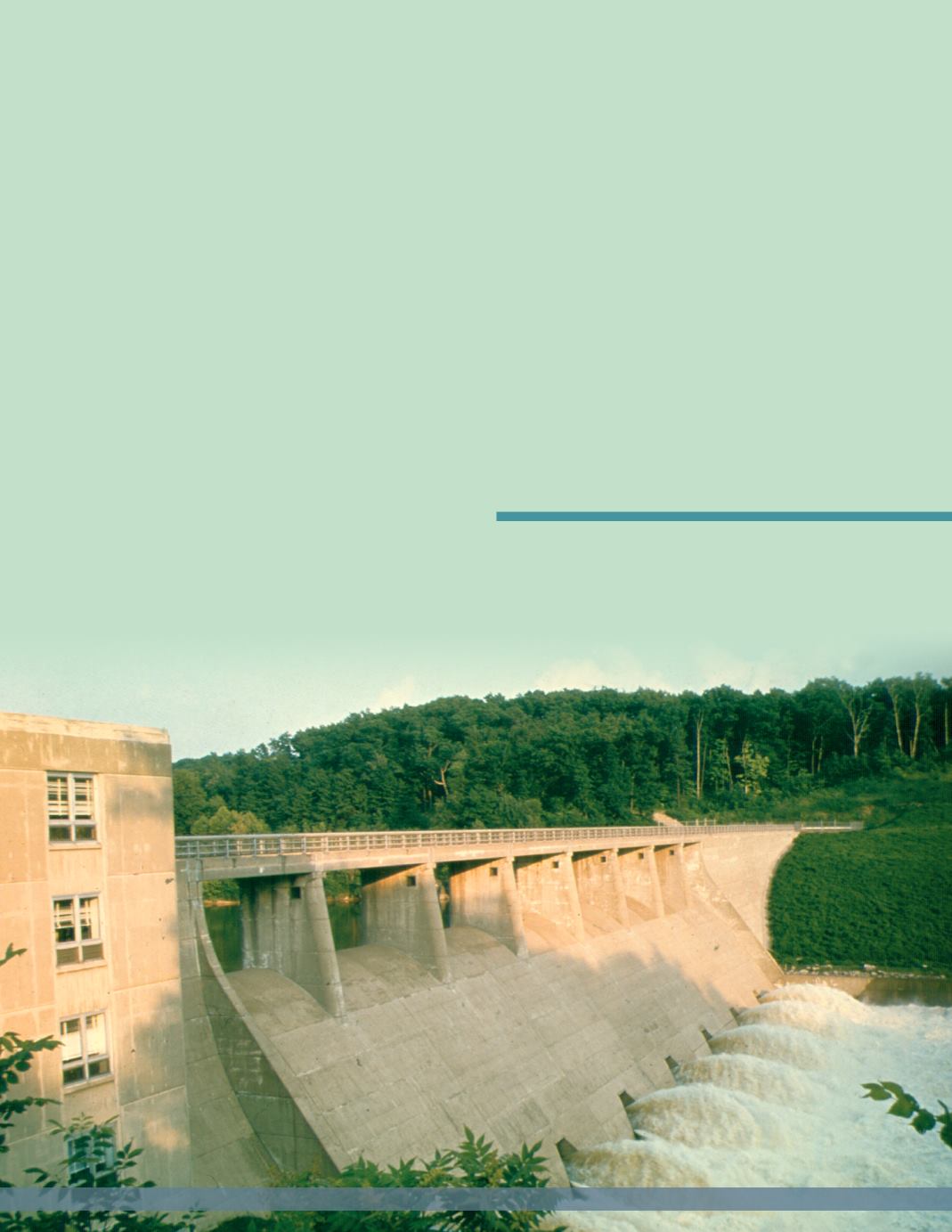
Reservoirs and Dams
It is interesting to see how humans have
changed the landscape over time. One way to
change the landscape is for people to build
reservoirs
. Many reservoirs have been built in
Pennsylvania, mainly to store our fresh water supply.
Reservoirs and dams also help to keep our
water flowing at a steady pace during drier times.
During times of heavy precipitation, they help to
prevent flooding of our rivers. Reservoirs and
other water forms provide Pennsylvanians and
tourists withmany recreational activities, such as
fishing, boating, swimming, and water-skiing.
Some dams are used to provide people with
electricity. The force of water falling over a dam is
used to turn a turbine, or engine, at a power plant.
This action creates electricity. This kind of
electricity is known as
hydroelectric power.
One
percent of Pennsylvania’s electric power is
produced this way.
Reservoirs also can be referred to as lakes or
dams. Some of our larger reservoirs are
Pymatuning Reservoir, LakeWallenpaupack Dam,
Raystown Lake, Youghiogheny Dam, Shamokin
Dam, Allegheny Reservoir, and Tioga-Hammond
Lakes. Raystown Lake is the largest human-made
lake totally within Pennsylvania’s borders.
L
ET
’
S
R
EVIEW
1. Name and locate themajor river systems in
western, central, and eastern Pennsylvania.
2. How did glaciers help to formour natural lakes
and wetlands?
3. A) What are wetlands?
B) Why are they important?
4. Name and locate at least three reservoirs in
our state.
5. Describe three important functions of
reservoirs.
6. List at least three reasons why our state’s
waterways are important to us.
Reservoirs are human-made lakes that are used to store
water.Water in these reservoirs is often held back and
stored by dams. Dams can also be used to create electricity
through hydropower for homes and businesses.
14
Understanding Pennsylvania


